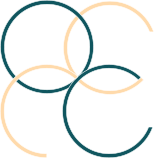Women who have experienced the joys of motherhood and pregnancy are sometimes left also with some suboptimal changes to their belly. A tummy tuck, or abdominoplasty seeks to correct many of these changes.
 1) Stretch marks: Stretch marks are scars that form in the skin with the rapid expansion in the size of the belly. They may be on the lower abdomen, or they can extend to the upper abdomen. A tummy tuck can remove the extra skin of the lower belly and around the belly button to correct much of the stretch marks which are visible.
1) Stretch marks: Stretch marks are scars that form in the skin with the rapid expansion in the size of the belly. They may be on the lower abdomen, or they can extend to the upper abdomen. A tummy tuck can remove the extra skin of the lower belly and around the belly button to correct much of the stretch marks which are visible.
2) Umbilical hernia: A hernia, or defect of the belly wall, can develop at the site of the belly button. Women may feel a small bulge in this area or may experience pain. This can often be corrected at the same time as the tummy tuck, where the bulge can be repositioned back beneath the abdominal wall, and the defect can be repaired. Sometimes this may be covered by insurance.
3) Diasthasis: Thinning of the abdominal wall and displacement of the rectus muscles (your six-pack) can result in a rounded belly where your inner organs are not appropriately supported by the belly wall. This results in extra roundedness of your belly and an altered center of gravity. Sometimes, you may experience an extra curvature of your lower back due to lack of core strength. Surgery corrects the thinning of the abdominal wall and repositions your core by the use of corsetting sutures along the front of the abdominal wall. This helps to centralize your rectus muscles.
4) Belly “pooch”: When you lean forward (in a diving position), the extra skin is often accentuated at the lower belly. This skin is removed to allow a smooth, flatter contour.

